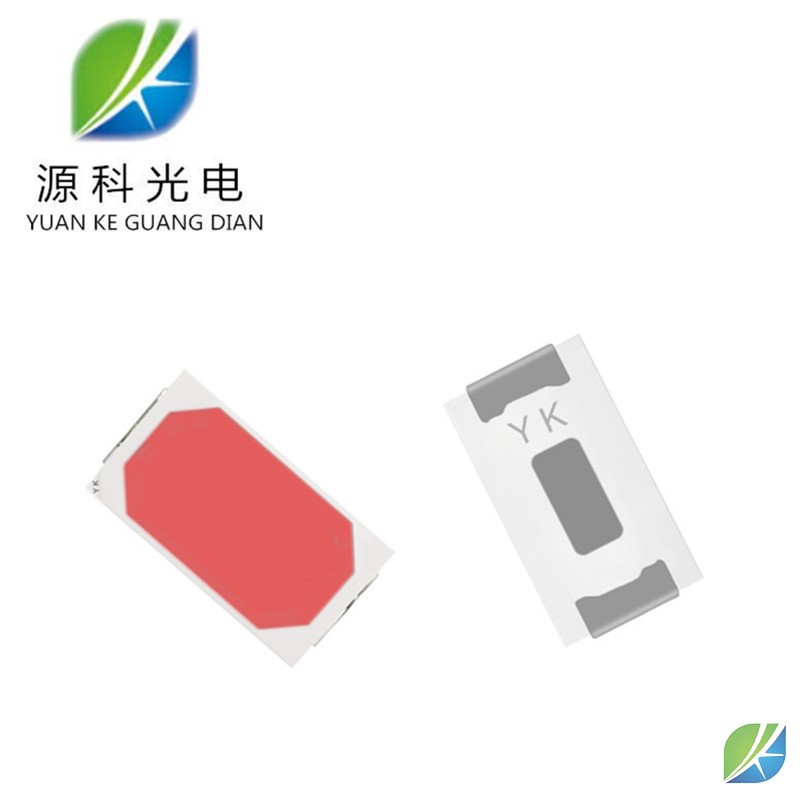Characteristics of LED plant SMD LED1. Different wavelengths of light have different effects on plant photosynthesis. The light required for plant photosynthesis is about 400-700nm. The light of 400-500nm (blue) and 610-720nm (red) contribute most to photosynthesis.
2. Blue (460nm) and red (660nm) LEDs can just provide the light required by plants, so the ideal choice is to use these two color combinations. In terms of visual effect, the plant lamp with red and blue combination is pink.
3. Blue light contributes to plant photosynthesis, which can promote the growth of green leaves, protein synthesis and fruit formation; Red light can promote the growth of plant rhizome, help to blossom and bear fruit, prolong flowering period, and increase yield!
4. The ratio of red and blue LEDs of LED plant lights is generally between 4:1 and 9:1, and generally 6-9:1 is optional.
5. When using a plant lamp to supplement light for plants, the height from the leaves is generally about 0.5-1 meters. Continuous exposure for 12-16 hours a day can completely replace sunlight.
6. The effect is very significant, and the growth rate is nearly 3 times faster than that of ordinary natural plants.
7. It can solve the problem of lack of sunlight in winter in greenhouses, promote the chlorophyll, anthocyanin and carotene needed in plant photosynthesis, enable the fruits and vegetables to be harvested 20% earlier, increase the yield by 30% to 50%, and further improve the sweetness of fruits and vegetables and reduce pests and diseases.
8. LED light source, also known as semiconductor light source, has a narrow wavelength and can emit light of a specific wavelength, so it can control the color of light. It can improve plant varieties by irradiating plants alone.
9. The LED plant growth lamp has low power but high efficiency. Because other lights emit full spectrum, that is, seven colors, while plants only need red and blue light, most of the light energy of the traditional lamp is wasted, so the efficiency is extremely low. LED plant growth lamp can emit specific red light and blue light required by plants, so its efficiency is extremely high, which is why the power of several watts of LED plant growth lamp is better than that of tens or even hundreds of watts. Another reason is that the traditional sodium lamp spectrum lacks blue light, while mercury lamp and energy-saving lamp spectrum lacks red light. Therefore, the light filling effect of traditional lamps is much worse than that of LED lamps. In addition, compared with traditional lamps, it saves more than 90% of electric energy, greatly reducing the operating cost.
Advantages of LED plant lamp
1. Standard power outlet connectors for drives or cooling fans are not required.
2. Plants need red and blue light wavelength for growth.
3. Compared with other ordinary lighting equipment, LED plant light has a mild light line and will not scorch seedlings.
4. Compared with other plant lights, it can save 10%~20% of electricity charges.
5. Blue light can promote plant growth, while red light can make plants blossom and bear fruit.
Function of LED full spectrum growth lamp
The full spectrum plant growth lamp is an artificial light source with full spectrum developed according to the plant growth law and the principle of simulating the solar spectrum matching. It has a wide radiation range, reaching more than 100LM per watt, and truly meets the requirements of green lighting. For agricultural greenhouses, as supplementary light, light can be enhanced at any time of the day, so as to always help plants carry out photosynthesis. Especially in the winter months, it can extend the effective lighting time. Whether at dusk or at night, it can effectively extend and scientifically control the light required by plants, and is not affected by any environmental changes.
In greenhouse or plant laboratory, it can completely replace natural light to promote plant growth.
The application test shows that the wavelength of the full spectrum plant lamp is very suitable for the growth, flowering and fruiting of plants Generally, indoor plants and flowers will grow worse and worse over time. The main reason is the lack of sufficient light irradiation. If the spectral irradiation is suitable for plants, it can not only promote their growth, but also extend the flowering period and improve the quality of flowers and trees.
For the cultivation of plants and flowers in the office halls of large enterprises, light compensation is a big problem. The use of full spectrum low-power light compensation can completely solve this problem. It also plays the role of landscape lighting. Because of the strong color rendering of the light source, the flowers and trees are bright in color under full spectrum light, giving people a pleasant feeling.
Principle of LED plant growth lamp;
Light environment is one of the indispensable physical environment factors for plant growth and development. Controlling plant morphology through light quality regulation is an important technology in the field of protected cultivation. Full spectrum plant lamp:
It contains a wavelength of 400~420nm to help form anthocyanins and resist the elongation of branches and leaves. The wavelength is 450-460nm, which can thicken the stems and leaves, accelerate plant development, and regulate stomatal opening.
The wavelength is 550nm, which promotes the growth of oxygen and helps the tissues to store nutrients better. The wavelength is 580nm, which can promote the growth of roots and early germination.
The wavelength is 650 ~ 660nm, which can promote the overall growth of plants. Especially in the flowering and fruiting stages, it can increase the growth speed (flowering 20 days earlier, harvest 30 days earlier), increase the number of fruits by 25% ~ 35%, and reduce the incidence of deformed fruits. Low 720-1000nm absorption rate, stimulating cell elongation, affecting flowering and seed germination

